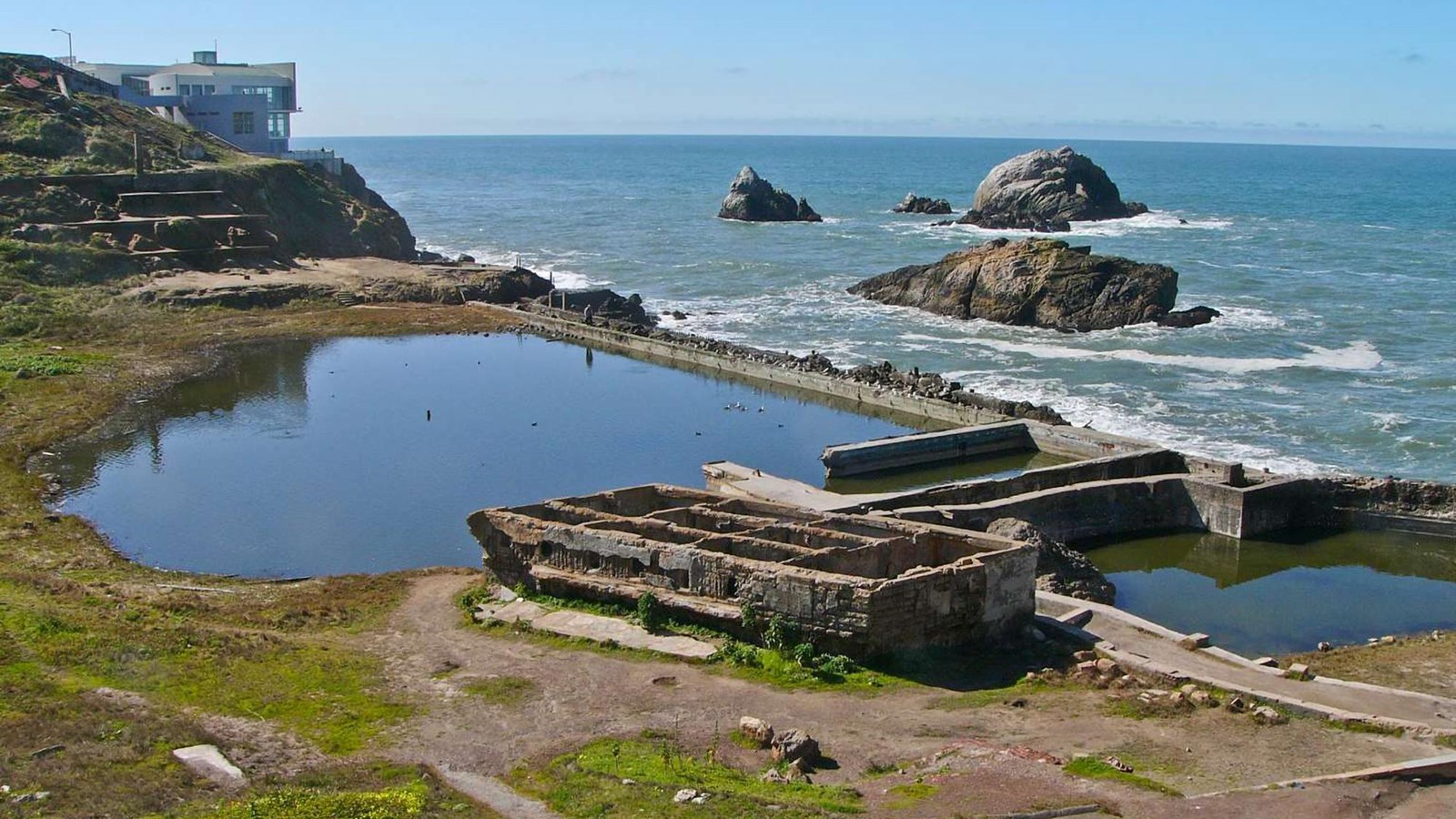Last updated: October 10, 2024
Place
Sutro Baths

Scenic View/Photo Spot
Along the shoreline of Lands End are the ruins of the once mighty Sutro Baths, the public ocean water bathhouse envisioned and financed by Adolph Sutro in the late 1800s. Right on the beach, the ruins are an interesting place to wander about as the tide rolls in and out.
History of the Baths
Adolph Sutro, self-made millionaire, San Francisco mayor and all around entrepreneur, developed the lavish Sutro Baths in 1894. With his special interest in natural history and marine studies, he constructed an ocean pool aquarium among the rocks north of the Cliff House. Sutro then expanded his ocean front complex by constructing a massive public bathhouse that covered three acres and boasted impressive engineering and artistic details. Sutro's dream was to provide a healthy, recreational and inexpensive swimming facility for thousands of San Franciscans.
The baths weren't just any swimming hole. Inside a massive glass enclosure were seven swimming pools kept at various temperatures, not to mention slides, trapezes, springboards and a high dive. During high tide, the Pacific Ocean could fill the 1.7 million gallons of water required for all the pools in one hour. The baths were capable of accommodating 10,000 people at once, offered 20,000 bathing suits and 40,000 towels for rent. But no flip flops.
Also included at the baths was a cultural educational component that focused on natural history exhibits, sculptures, paintings, tapestries and artifacts from Mexico, China, Asia, and the Middle East, including Egyptian mummies. Sutro Baths was a venue for concerts, talent shows and restaurants. A railroad provided transportation to Lands End by the late 1890s, so a visit to Sutro Baths became a feasible family day trip.
For all their glamour and excitement, the baths were not commercially successful over the long-term. They became less popular largely due to the Great Depression, the reduction in available public transportation and new public health codes. In attempts to make the facility profitable, the Baths were converted into an ice-skating rink, but it was not enough to maintain the enormous building. In 1964, a high-rise apartment development was proposed. Unfortunately, a fire destroyed the Baths in 1966, extinguishing an era of guild and glamour. The concrete ruins just north of the Cliff House are the remains of the grand Sutro Baths.
John Harris and the Dibble Civil Rights Act
4th of July, 1897. It's a scorcher in old San Fran. A group of friends decides to cool off by taking a trip out to Sutro Baths. After paying the entrance fee, San Francisco native John Harris is denied entry to the pools because he's black.
Mr. Harris decided to sue Adolph Sutro. Mr. Harris brought his landmark case before the San Francisco Superior Court under California's Dibble Civil Rights Act of 1896, which declared: all citizens "of every color or race whatsoever" shall "be entitled to the full and equal" facilities of "all places of public accommodation or amount." As usual, California was ahead of its time, seeing as how the Supreme Court made the reprehensible decision to uphold separate but equal segregation policy for public spaces in Plessy vs. Ferguson the year prior.
The suit was successful, but personally for Mr. Harris, the victory was bittersweet. The amount he won in damages was insufficient even to cover his legal expenses. Furthermore, due to his vast wealth and the small amount of the fine, Mr. Sutro was able to continue his exclusionary practices at the baths. The case, however, did have an impact on the state at large, contributing to a wave of suits in the wake of Harris' success.
